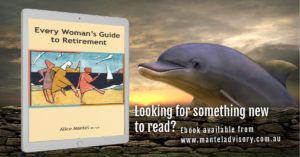A recent survey says there are three resources you need to better navigate getting older.
- Housing security, income security and quality care are essential enablers for later life planning.
2. Good information. Having access to quality information about ageing preparedness is essential. It assists people to know what to expect from their ageing bodies, what lifestyle changes they may need to consider as they age and negotiating social support systems.
3. Emotional resilience. Developing a positive attitude to ageing better equips people from the effects of future health shocks, finance shocks, dependency, or decline.
In our youth-oriented culture, ageing is associated with inevitable decline and burdensome dependency. These powerful negative stereotypes are internalised throughout our lives, which results in many of us being unwilling to think about being an older person or planning for such an undesirable future.
The 2022 National Seniors Social Survey asked its members and associated network members over 50 years about their ageing-related preparedness. About 68 percent of the 3,412 respondents felt they were prepared to some extent to deal with the ageing process. Most of these respondents reported there were some positive aspects to ageing, but people experiencing poor health were 30 percent less likely to feel prepared.
- People who felt there are positive aspects to ageing were 3.4 times (or 340%) more likely to feel prepared.
- People with concerns about ageing were 60% more likely to feel unprepared or neutral (neither prepared nor unprepared).
- Those who expected their quality of life to get worse over the next 5-10 years were 20% less likely to feel prepared.
Both individual characteristics and societal supports were relevant to how people prepared for getting older. People who had experienced health changes in family members were far more likely to be interested and better informed about how ageing might affect them personally. While poverty and disadvantage were more likely to impact people’s access to resources such as healthy food or appropriate medical care that assisted better ageing.
Domains of preparedness were:
• Preparing for changes in health and bodily abilities: respondents varied between acceptance of physical decline and being able to manage that decline, and fear of decline.
• Preparing accommodation: most respondents acknowledged the possible actions needed to remain at home with age, while fear of residential aged care underpinned the second most prevalent views. Renters were most concerned about their future.
• Preparing finances: while some respondents linked their feeling of financial security to having worked hard during their life, the second most prevalent view expressed concern about money, with some consequently being unable to prepare adequately for ageing.
Those feeling prepared for ageing frequently had very positive life-scripts reflecting acceptance, empowerment and capacity to manage ageing-related health changes. Not surprisingly, unpreparedness was represented by life-scripts focused on sudden or unexpected health declines or lack of resources and support.
To access the detailed survey, visit National Seniors, https://nationalseniors.com.au/uploads/NSA-Ageing-Preparation-report-FINAL.pdf
